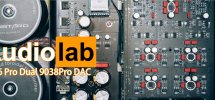restorer-john
Grand Contributor
I'd be more concerned with the atrocious soldering of the 'K2' clock...
Looks like it was a back of the shop dealer "option"

JVC have long (since 1987) championed their own K2 technology. Gotta love this explanation.

https://www.jvckenwood.com/en/technology/k2/what-is-k2.html
Looks like it was a back of the shop dealer "option"
JVC have long (since 1987) championed their own K2 technology. Gotta love this explanation.

https://www.jvckenwood.com/en/technology/k2/what-is-k2.html
